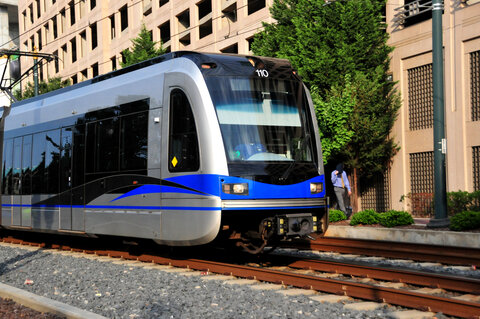Marc Joffe
The Federal Transit Administration’s (FTA’s) Capital Grants Dashboard shows that Austin, Texas, is on track to get over $4 billion of federal funds. The grant would cover 49 percent of the estimated $8.234 billion cost (including $1.1 billion of debt service expenditures) to build a 9.8‑mile light rail system through the city center. The nation’s 11th-largest city has experienced dramatic growth without light rail, but transit advocates prevailed upon voters to begin funding a system in the November 2020 election through a property tax increase. Some of those voters may now be experiencing buyers’ remorse, as they will have to cover the remaining 51 percent of the cost for a system with questionable benefits.
Given Austin’s rapid growth and serious traffic congestion, light rail might seem like an obvious solution. But continued rapid population growth is by no means a sure thing. Last year, Austin fell out of the top 10 US cities by population after being surpassed by Jacksonville, Florida. And Travis County, which includes Austin and surrounding areas, saw its first year of net out-migration since 2002. Both the city and county are still growing, but the rise in population could further slow or reverse given Austin’s high housing costs.
But even if Austin’s population flattens, there is still the question of how its 980,000 residents (plus visitors) can move about the city without causing traffic jams. Light rail is not a cost-effective solution to congestion, and there are other things the city could do to obtain some relief more quickly.
The light rail project is on track to get its Full Federal Grant Agreement (FFGA) in 2027. The city could then commence construction with an eye toward finishing the project in 2033. But these dates could well slip.
FTA typically requires a secure source of local funding before signing an FFGA. But the city is now defending a lawsuit filed by seven Austin property owners hoping to strike down the tax voters approved in 2020. Plaintiffs contend that the ballot measure called for a “citywide traffic-easing rapid transit system,” but Austin now plans to lay only a portion of the originally proposed track, violating its promise of a citywide system in the 2020 ballot language. As long as this lawsuit has a chance of succeeding, the federal grant agreement may not be forthcoming.
Once construction starts, there is no guarantee that it will be completed in six years. Indeed, other projects provide cautionary tales. Honolulu took 12 years to build its 10.75-mile Skyline. Maryland started construction of the 16-mile Purple Line in the Washington, DC, suburbs seven years ago and is not expected to start carrying passengers for another three years.
When Austin’s light rail begins operations, its impact on traffic congestion may not be that great. Project sponsors expect 28,500 daily riders by 2040, but past projections by other agencies have sometimes proved to be wildly overoptimistic. In Honolulu, for example, city officials expected 10,000 daily riders on phase one of its Skyline service, but thus far, actual ridership is only about a third of this projection. Rail projects in San Francisco and Southern California have also seen large shortfalls in actual versus expected ridership.
Further many future light rail riders may switch from existing bus service. Cap Metro’s 801 Rapid bus covers much of the route to be served by the light rail project, and many passengers from this bus line could be expected to become light rail passengers. As a result, even if light rail attracted 28,500 passenger trips in 2040, only a portion of those would replace car trips.
On the other hand, light rail will reduce the street network’s capacity through lane and road closures. For example, the city has proposed to close a portion of Guadalupe Street known as “The Drag” to vehicular traffic, diverting cars to Nueces Street. So, after spending $8 billion to slightly reduce car trips on a more constrained road network, the city may see little to no congestion relief.
But there are other things Austin could do to reduce traffic, and these options could be implemented well before 2033 at a far lower cost. First, it could make enhancements to the 801 Rapid and other core bus routes to reduce travel times, such as adding more transit priority lanes, traffic signal coordination, and level boarding (which saves time by removing the need for passengers to walk up and down steps at bus stops). These incremental measures might boost the 801 Rapid’s on-time performance above its current 75 percent level and thereby attract more riders. The city could also continue efforts to improve its CapMetro Bikeshare network by adding more locations and including scooters in the mix. Although shared micromobility is already popular in Austin, it has room to grow, as illustrated by Washington, DC. In the nation’s capital, shared micromobility utilization approaches 18 trips per day per thousand population, almost double Austin’s rate.
Big cities usually have some form of rail transit, and it is understandable that some in Austin would want to add this amenity as the city’s population approaches the million mark. But rail transit made more sense in the early 20th century when more personalized forms of transportation were less developed. As Austin hits its stride in the 21st century, its leaders should think carefully before investing heavily in a legacy form of transportation.
























